More than 40 species have been officially recovered by the Endangered Species Act. Some, like bald eagles and peregrine falcons, have received a lot of publicity.
Here are five lesser known – but no less interesting – stories of recovery.
The Endangered Species Act had its genesis in the early 1900s, when visionary conservationists like George Bird Grinnell, Gifford Pinchot and Theodore Roosevelt began calling for a change in wildlife management and habitat protection.
“To lose the chance to see frigatebirds soaring in circles above the storm, or a file of pelicans winging their way homeward across the crimson afterglow of the sunset, or a myriad terns flashing in the bright light of midday as they hover in a shifting maze above the beach,” wrote Roosevelt. “Why, the loss is like the loss of a gallery of the masterpieces of the artists of old time.”
Something needed to be done. A lot of those early efforts focused on protecting game species and migratory birds. In the 1960s, conservationists focused on saving species that needed the most help. In 1966, Congress passed the Endangered Species Preservation Act. In 1973, under the Nixon Administration, the Endangered Species Act was born.
Enjoy these five successes: a reptile, mammal, plant, fish and bird.
-
Island Night Lizard
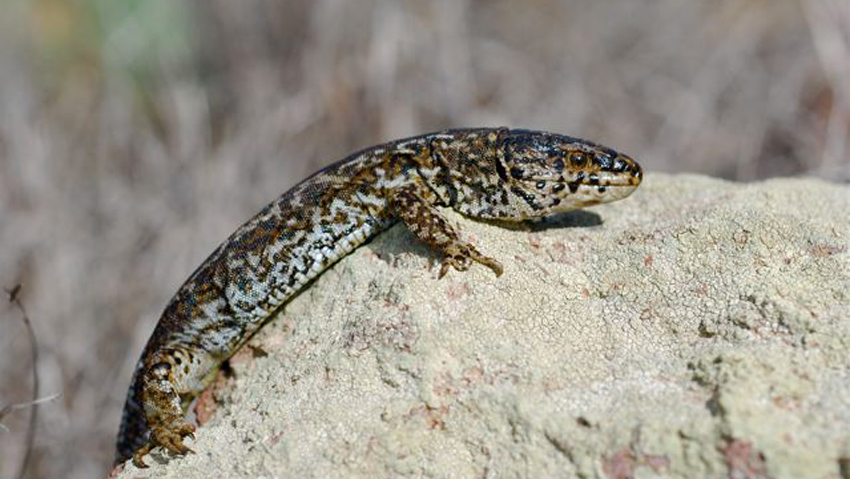
Island night lizard on Rock Side. Photo © US Navy through a Creative Commons license Two words are most commonly used to describe the island night lizard: remarkably sedentary.
That may be an understatement.
The small lizard can live to be up to 30 years old, but often sticks to a home range of about 20 yards.
“They have incredibly small little worlds where they live,” says Jane Hendron, spokesperson for the Carlsbad office of the U.S. Fish and Wildlife Service. “They will eat vegetation. They will eat beetles. And during lean times, it’s been demonstrated that if they shed their skin they will even eat their skin.”
The island night lizard – oddly named since it isn’t nocturnal – is found on only a few islands off of California’s coast: San Clemente, San Nicolas and Santa Barbara, and a tiny little islet called Sutil.
They give birth to live young, and because of their general lack of movement, require only about half the food of similarly-sized lizards.
The lizards thrived in their island life until nonnative goats, pigs and rabbits ate most of the vegetation, and feral cats ate the lizards themselves.
The federal government interceded in 1977, and by the mid-‘90s, the Fish and Wildlife Service, National Park Service and the U.S. Navy had coordinated to remove all goats, sheep and rabbits. Feral cats were also largely eliminated.
In 2014, the lizards crawled off the endangered species list. More than 20 million are now estimated to live on San Clemente Island, more than 15,000 on San Nicolas and almost 18,000 on Santa Barbara.
-
Columbian White-Tailed Deer
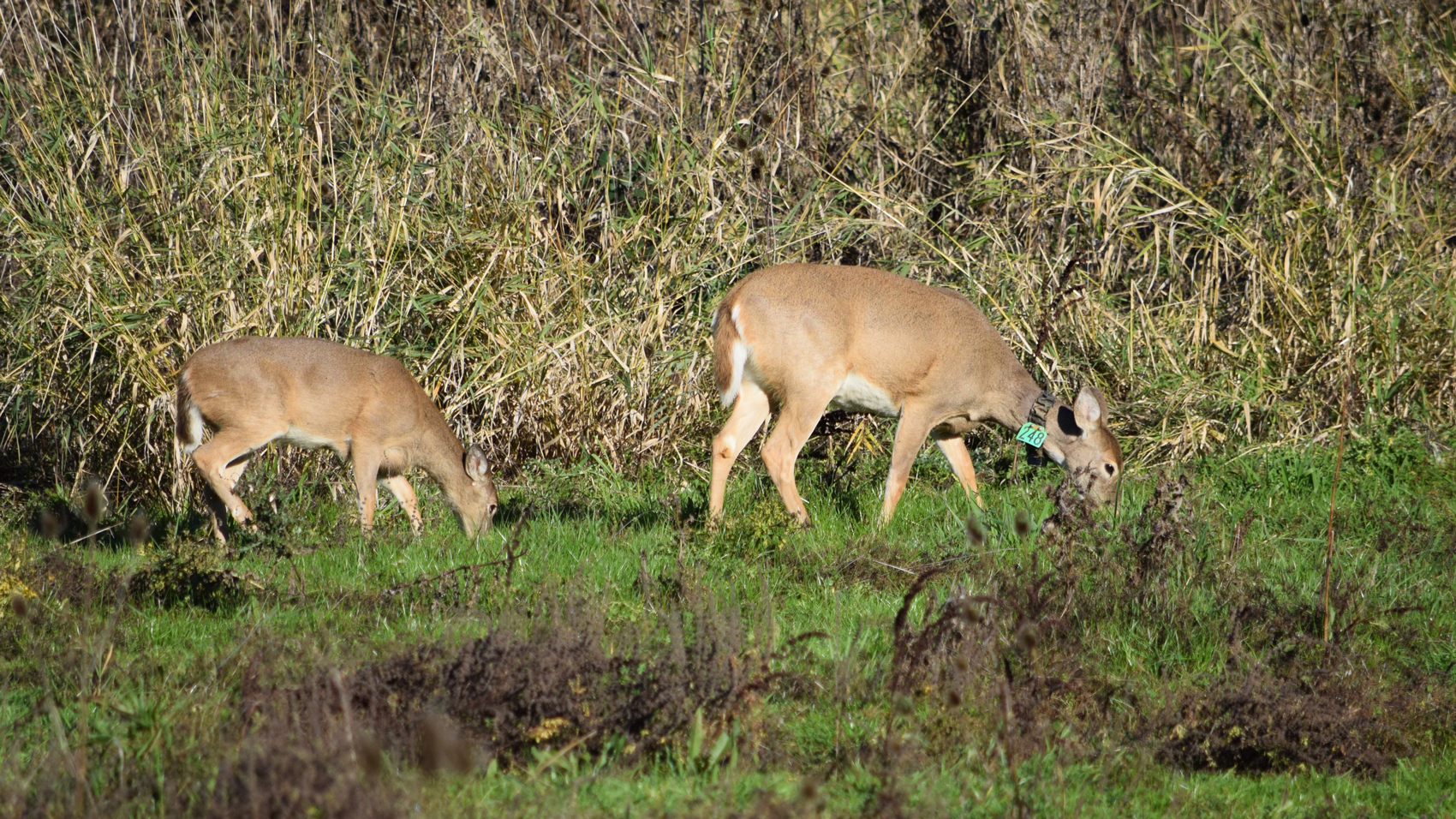
Columbian White-tailed Deer at Ridgefield National Wildlife Refuge. Photo © The Nature Conservancy (Lisa Feldkamp) Anyone living on the East coast won’t likely think of white-tailed deer as endangered. They range across huge swaths of the U.S., providing hunting opportunities for thousands of Americans. But the Columbian white-tailed deer is a different story.
Tens of thousands of the small mammals weighing between 100 and 300 pounds and standing less than 3-feet tall at the shoulders once roamed portions of the Pacific Northwest from the Cascade Mountains to the ocean, Puget Sound to southern Oregon. They thrived on small islands and riparian areas.
Their story is a familiar one: Habitat changed with encroaching agriculture, residential development and logging. Over-hunting and poaching took its toll, says Brent Lawrence, a spokesman for the U.S. Fish and Wildlife Service in Oregon.
The distinct subspecies was given federal protections in the late 1960s. Its numbers were down to less than 1,000 deer between two small subpopulations.
Through translocations and partnerships on wildlife refuges, numbers started increasing.
“They have a relatively small population distribution right now, and there’s not a huge range of them,” says Lawrence. “But they’re recovering nicely in those areas.”
So nicely, in fact, that one population was removed from the endangered species list in 2003 with more than 5,000 animals. The second population, centered around the Columbia River, was downgraded in October from endangered to threatened.
-
Tennessee Purple Coneflower
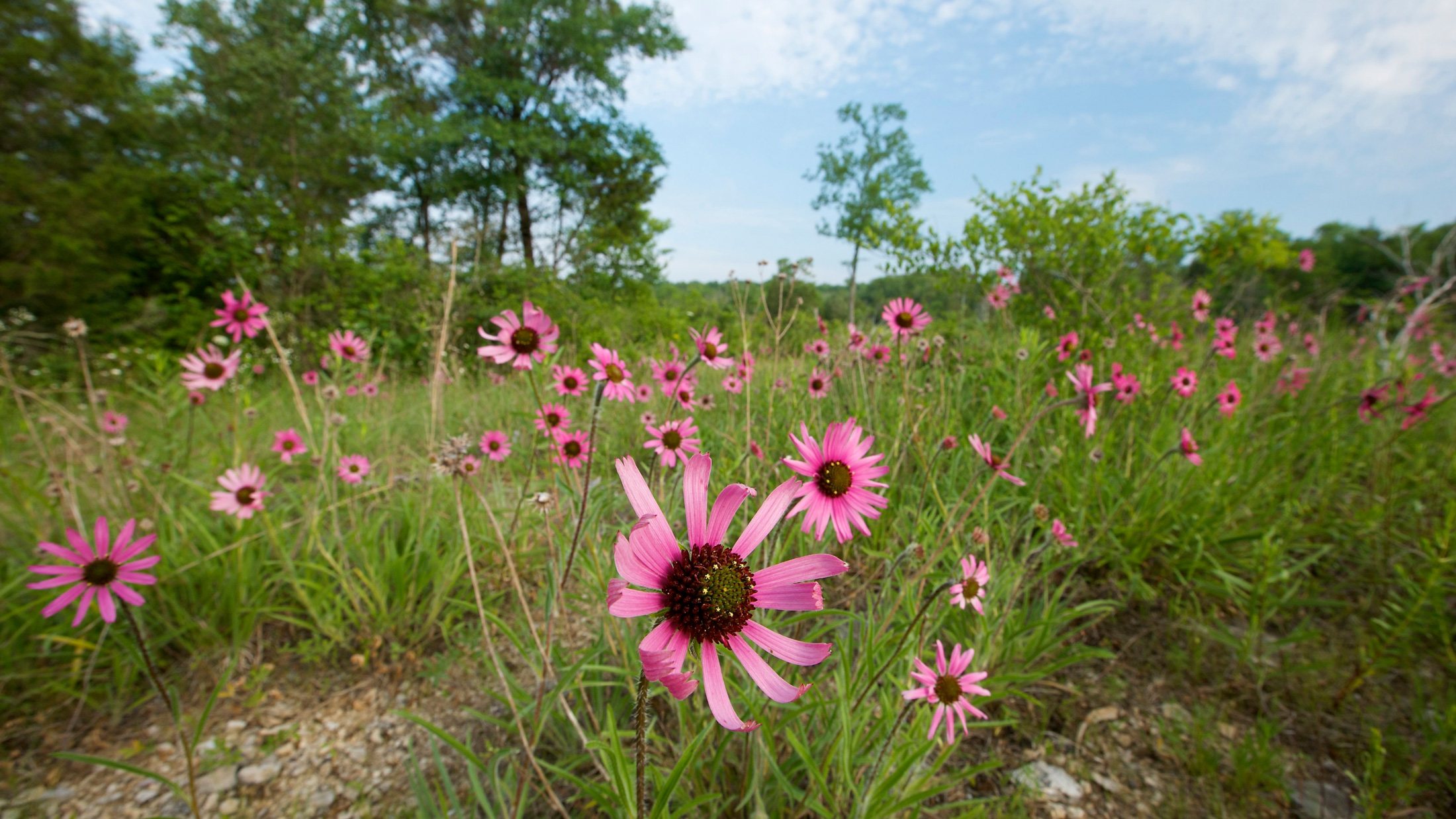
Tennessee coneflowers at Couchville Cedar Glade State Natural Area. Photo © Byron Jorjorian, used with permission Like the black-footed ferret or Caspian horse, the Tennessee purple coneflower was once thought to be extinct. Until it was found again.
It grows in the limestone barrens and cedar glades of only three counties in Tennessee, and until a Vanderbilt professor named Elsie Quarterman accidentally rediscovered it in 1968, most botanists assumed it was lost.
But the flower is remarkable for more than its apparent rise from the dead, says Sally Palmer, director of science for The Nature Conservancy in Tennessee, who has worked with the plant for almost two decades.
“In its natural habitat, it is a beautiful, magenta-colored, daisy-like flower in the middle of gray and green. It grows in lovely groupings in cedar glade and barren habitat,” she says. “It’s one of those great stories about how important basic field botany still is.”
The purple coneflower wasn’t growing in a remote corner of a western wilderness. It was on the outskirts of Nashville, under everyone’s nose.
It also needed help.
So for decades after it was listed, countless groups from The Nature Conservancy to garden clubs to federal agencies worked together to protect swaths of coneflower habitat. The effort paid off, and in 2011, the Tennessee purple coneflower, one of the first plants to be placed on the endangered species list, was removed. The protected land has also benefited about 30 other rare plant species, not to mention birds, butterflies and small mammals.
And now the plant that some thought was extinct has 19 secure colonies among six populations.
-
Oregon Chub
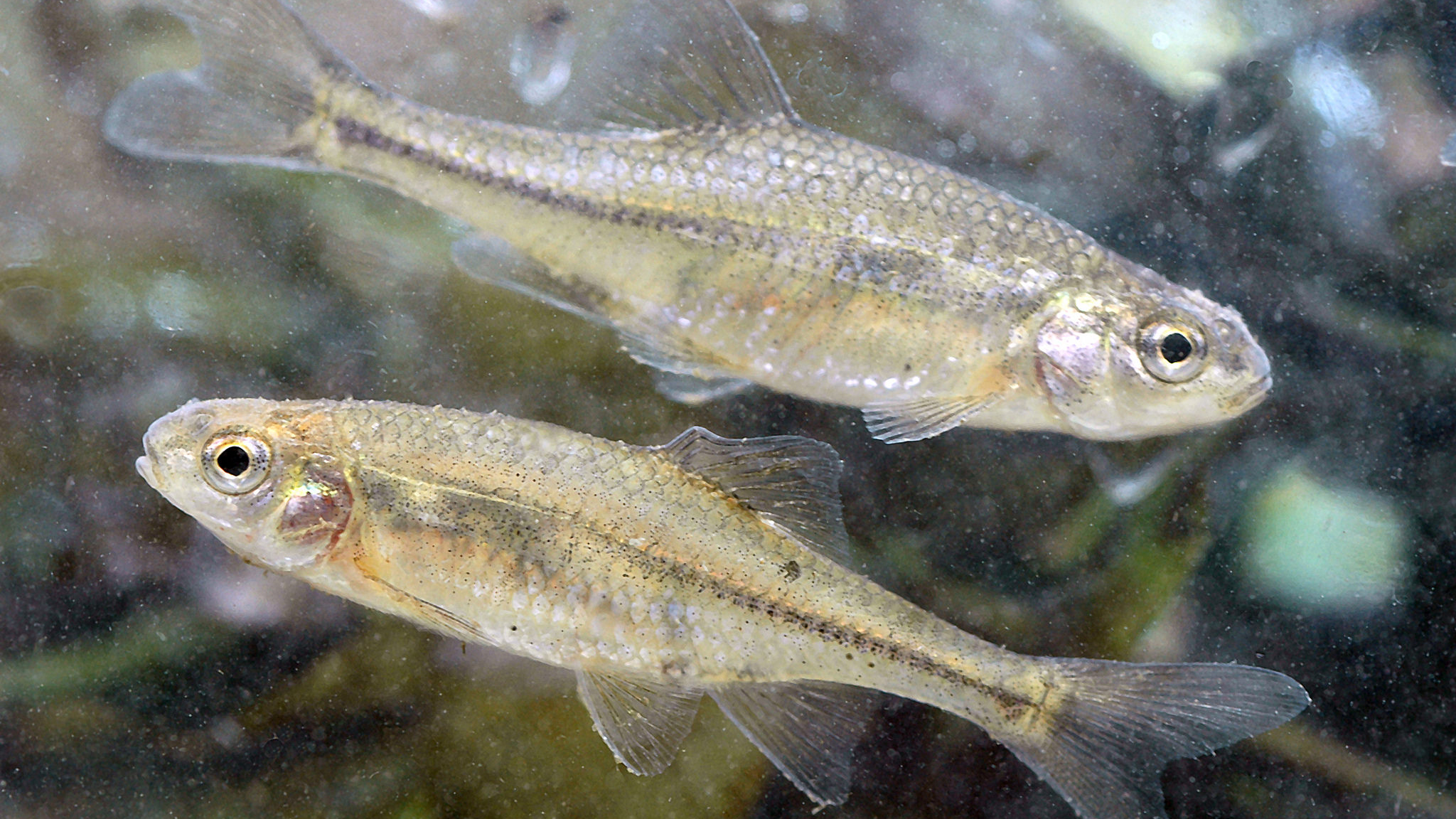
Oregon Chubs. Photo © Rick Swart, Oregon Department of Fish and Wildlife through a Creative Commons license Threats that faced the Oregon chub read like a buffet of environmental issues: Predation from non-native species; runoff from herbicide and pesticide; rotenone to manage sport fisheries; accidental chemical spills and the list goes on.
Damming rivers and flood control, resulting in a loss of side channels and overflow ponds, were some of the biggest blows to the mosquito-eating, olive, silver and white fish.
But aside from fixing the physical issues, another challenge for biologists was convincing people why they should care about the relatively nondescript, 3.5-inch minnow.
“When you are doing good things for the Oregon chub, and they are thriving, the same backwater areas are great for young salmon and steelhead to be in, also,” Lawrence says. “So when you are creating waterways to help the chub you’re also helping more iconic sportfish.”
In 1993, when the species was listed, there were only eight known populations. Through protecting habitat and wild populations, and reintroducing new ones, that number increased to 38. In 2010, the Oregon chub became the first fish to be removed from the endangered species list.
And its success continues. Fisheries biologists have now documented 50 populations.
-
Brown Pelican
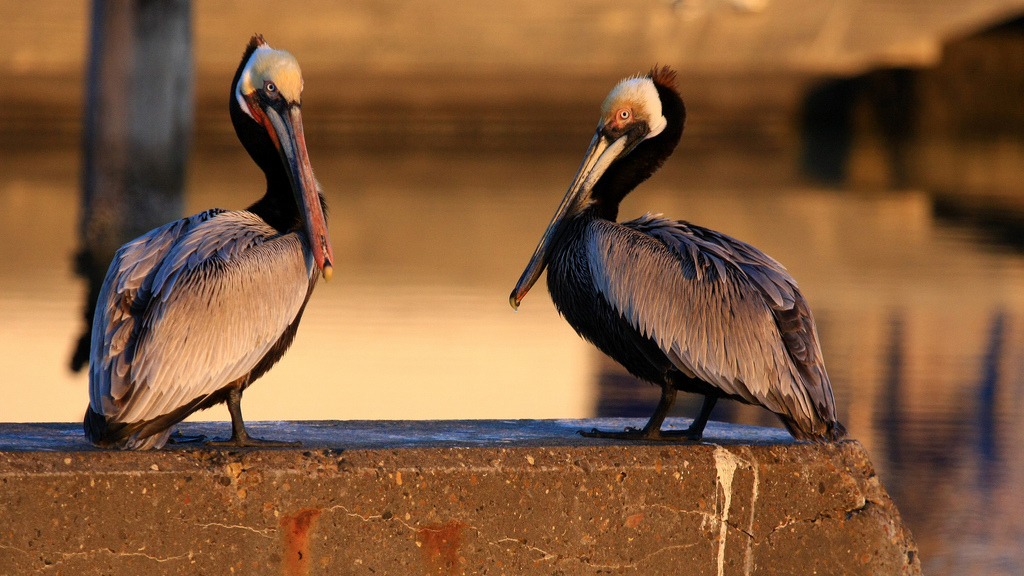
Brown Pelicans. Photo © Seabamirum / Flickr through a Creative Commons license Depending on where you look, it’s hard to imagine the brown pelican was once endangered to the point of possible extinction.
The birds with 7-foot wingspans and pouches that can hold up to 3 gallons of water and fish cover the Atlantic, Pacific and Gulf coasts of North and South America. But it wasn’t always that way.
Brown pelicans – also called common pelicans – faced their first wave of threats in late 19th and early 20th century. Their feathers were sought for clothing, particularly for women’s hats.
The subsequent Migratory Bird Treaty of 1918 helped protect them from illegal hunting, but by the late 1940s, their numbers were crashing again. Commercial fishermen blamed pelicans for lower fish numbers. DDT thinned their shells so much the eggs broke during incubation, and another pesticide – endrin – killed them.
The federal government offered protections for the bird in 1970, and in 1972, the Environmental Protection Agency banned DDT.
Countless groups, state government agencies and federal agencies worked to bring brown pelican numbers back. Populations were reintroduced and protected. Nesting habitats were restored.
By 1985, numbers were strong enough to remove them from the endangered species list. Now hundreds of thousands of nesting pairs live along both coasts.
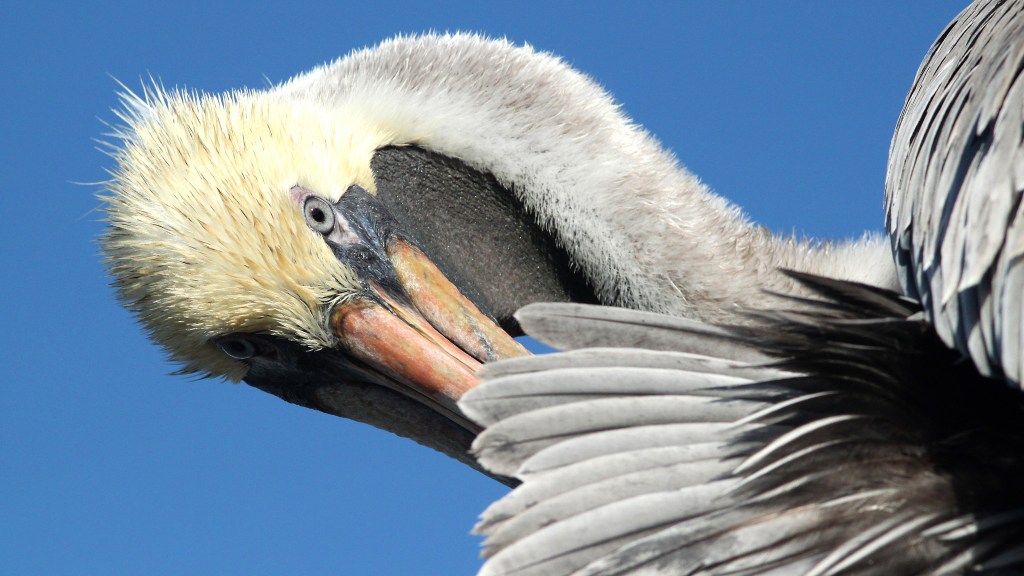



There is simply no excuse for allowing animals, fish or Birds to become extinct.
Now, especially with a President and appointees showing no respect for the Earth
and her creatures, we need to be vigilant in protecting these species.
Oh, I knew about the brown pelican, Louisiana state bird, and found on the flag. I grew up literally on the delta of the Mississippi but never saw the magnificent bird until I was 35, in Florida, around 1985. Then, later, when I would visit my mother in Buras, I finally saw our native bird. Let’s hope the EPA survives as the brown pelican did.
I am concerned about the proposed cutbacks to the EPA. What programs will be first to go?
I never knew about these amazing species
Thank you! Its good to hear how well the Endangered Species Act has worked over the years!
I would like to note that Teddy Roosevelt created the very first National Wildlife Preserve, to protect the Brown Pelican. It is located, close to my home, in Sebastian, FL. As this magnificent bird is my favorite, it is horrifying yo think that I might never have gotten to see it, had he not intervened.
Fantastic. Send this article to Congress!
Hope is a good thing found in Pandora’s box after all manner of darkness was released in the world. But it is only a little push of energy to jump start the work. Thanks to all the people who read Silent Spring and went to work to turn the tide
A brown pelican spent much of the winter on Lake Erie near Cleveland a couple of years ago.
Great Info! Thanks for publishing it!
-Paul Howard
We’ve seen quite an increase in pelicans in Wisconsin as well.
Save all the animals.
Hooray!
Now that Scott Pruitt is the head of the EPA, I’m afraid many more species are going to become extinct. This administration has no respect for the earth or it’s most vulnerable creatures, including mankind.
Many thanks for news of these comeback species, little known to me, who are testaments to the Endangered Species Act and to those who helped move them along off the endangered listing. So much bad news and then wonderful news — because the seeming least deserved and received attention, others may hope to inherit the legacy that caring and effort do pay off. Thanks to all those who made these “saves” possible.